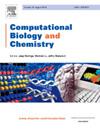Knowledge graph applications and multi-relation learning for drug repurposing: A scoping review
IF 2.6
4区 生物学
Q2 BIOLOGY
引用次数: 0
Abstract
Objective
Development of novel drug solutions has always been an expensive endeavour, hence drug repurposing as an approach has gained popularity in recent years. In this review we intend to examine one of the most unique computational methods for drug repurposing, that being knowledge graphs.
Method
Through literature review we looked at the application of knowledge graphs in medicine, specifically at its use in drug repurposing. We also looked at literature embedding methods, integration of machine learning models and approaches to completion of knowledge graphs.
Result
After filtering 43 papers were used for analysis. Timeline, country distribution, application areas of knowledge graph was highlighted. General trends in the use of knowledge graphs for drug repurposing and any shortcomings of the approach was discussed.
Conclusion
This approach has gained popularity only very recently; hence it is in a nascent phase.
求助全文
约1分钟内获得全文
求助全文
来源期刊

Computational Biology and Chemistry
生物-计算机:跨学科应用
CiteScore
6.10
自引率
3.20%
发文量
142
审稿时长
24 days
期刊介绍:
Computational Biology and Chemistry publishes original research papers and review articles in all areas of computational life sciences. High quality research contributions with a major computational component in the areas of nucleic acid and protein sequence research, molecular evolution, molecular genetics (functional genomics and proteomics), theory and practice of either biology-specific or chemical-biology-specific modeling, and structural biology of nucleic acids and proteins are particularly welcome. Exceptionally high quality research work in bioinformatics, systems biology, ecology, computational pharmacology, metabolism, biomedical engineering, epidemiology, and statistical genetics will also be considered.
Given their inherent uncertainty, protein modeling and molecular docking studies should be thoroughly validated. In the absence of experimental results for validation, the use of molecular dynamics simulations along with detailed free energy calculations, for example, should be used as complementary techniques to support the major conclusions. Submissions of premature modeling exercises without additional biological insights will not be considered.
Review articles will generally be commissioned by the editors and should not be submitted to the journal without explicit invitation. However prospective authors are welcome to send a brief (one to three pages) synopsis, which will be evaluated by the editors.
 求助内容:
求助内容: 应助结果提醒方式:
应助结果提醒方式:


